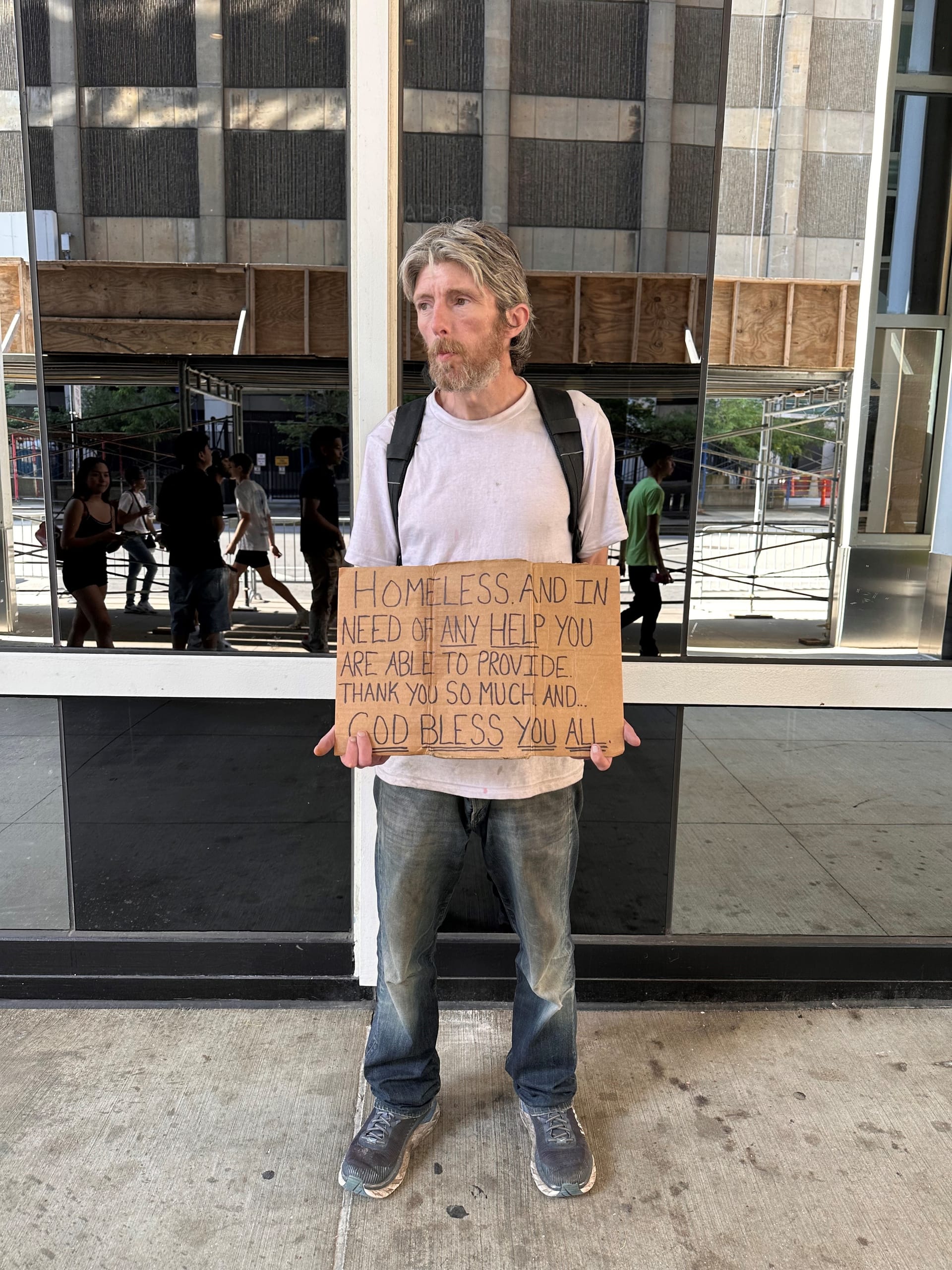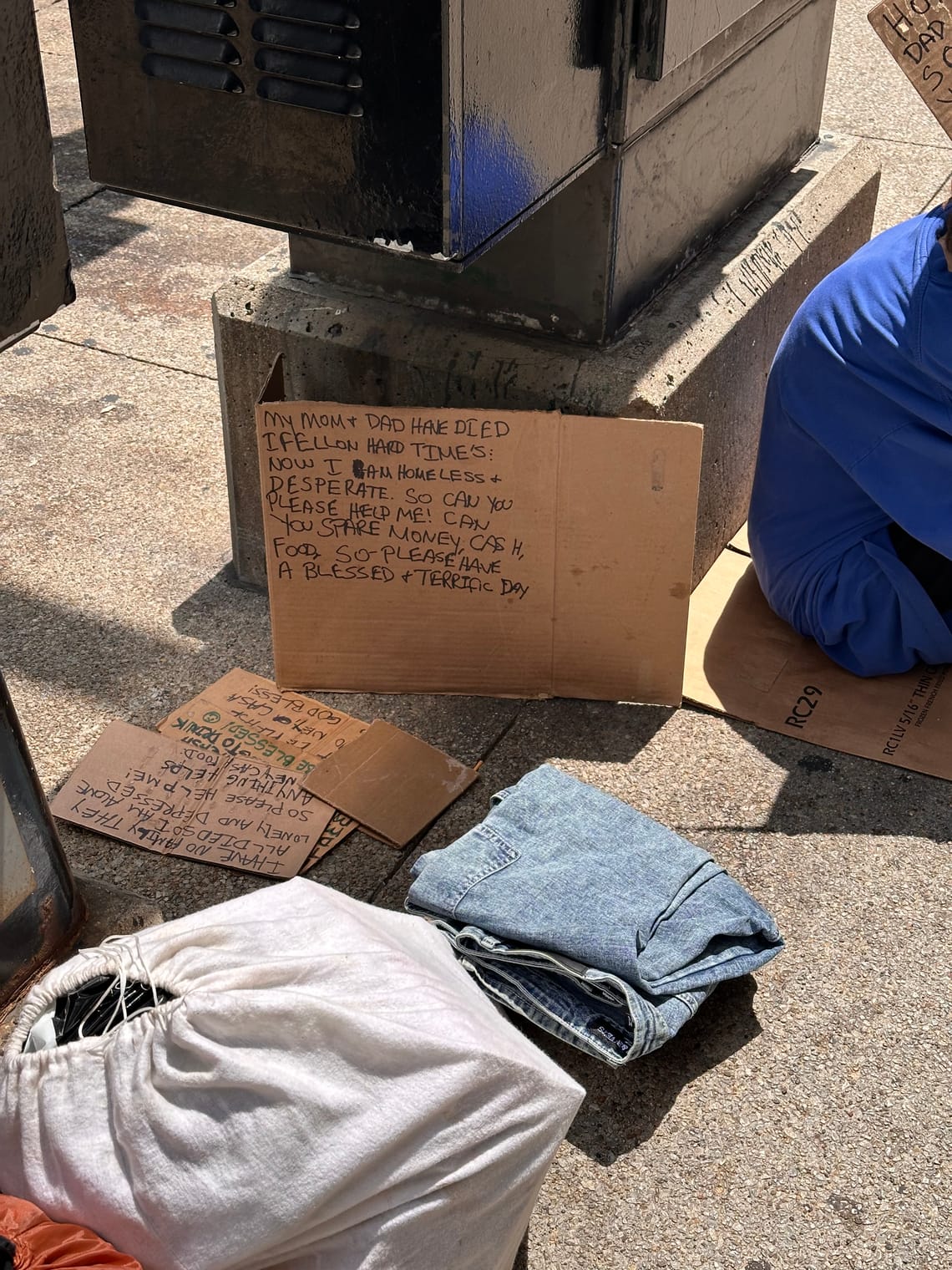In public spaces, especially in urban environments where people are rushing, distracted, or emotionally guarded, communication is everything. For someone who is homeless and in need, a sign serves as more than just a request for money. It functions as a non-verbal spokesperson, a silent advocate, doing several key things all at once:
1. It explains the situation without a word
Most people don’t feel comfortable walking up to a stranger and asking, “Are you okay?” or “Do you need help?” A sign breaks that silence. It tells a story, even briefly, and does so without requiring the person to repeat it over and over.
Without a sign, it is just “a person standing there.”
With the sign, they become “a person experiencing homelessness who needs help.”
That shift is critical. It gives context, which transforms indifference into potential compassion.
2. It expresses their humanity through gratitude
The phrasing on this sign, “thank you so much,” “God bless you all, "does something subtle but vital: it reframes the interaction from a one-way appeal to a two-way exchange grounded in dignity.
- He is not begging.
- He is inviting kindness and returning it in the form of thanks and blessings.
This gives people permission to act with empathy without feeling manipulated or guilty. It makes giving feel good.
3. It gives people permission to care
This might be the most profound function of all.
In modern life, there’s a constant internal tension for many people:
- They see suffering, but
- They don’t know if it's “safe” to engage, or if their help is wanted, or if they’ll be scammed, or if it’ll just make things worse.
A clear, respectful sign cuts through all that uncertainty. It signals openness to connection:
“Yes, I do need help. Yes, I welcome it. And I thank you.”
This reduces the psychological barrier for the passerby. Suddenly, caring becomes easier.
4. It advocates without confronting
Unlike direct confrontation, verbal asking, or aggressive panhandling, a sign allows someone to maintain a quiet presence while still advocating for their needs. It’s a non-intrusive appeal in a world that often values personal space and minimal disruption.
The sign speaks so he doesn’t have to.
That’s especially important for people who may be emotionally or physically drained, anxious, or simply trying to maintain dignity in difficult circumstances.
Conclusion
The sign, in its modest cardboard form, does something extraordinary:
It translates hardship into language, silence into clarity, and distance into the possibility of care.
It advocates for the person holding it, not with volume or force, but with vulnerability, honesty, and the quiet power of being seen.
And in that way, it becomes a bridge, between the one in need and the one who might help, in a world that too often keeps those two people apart.


